Testing the HP Omen Transcend 16's capabilities with Forza Motorsport offers a unique opportunity to assess its performance in a real-world, high-demand gaming scenario. Forza Motorsport, with its detailed graphics and physics engine, serves as an ideal benchmark to evaluate the laptop's gaming proficiency.
This review aims to provide an honest analysis of how the Omen Transcend 16 handles real-life, heavy-load-gaming scenarios. We will focus on key performance indicators, such as frame rate stability, graphics rendering quality, and thermal management under extended gaming sessions.
The Omen Transcend 16, with its advanced specifications, is positioned as a high-end gaming laptop. However, specifications alone don't paint the full picture. This review will scrutinize how these specs translate into actual gaming performance.
Specs of the HP Omen Transcend 16

Design and first impression of the Omen Transcend 16
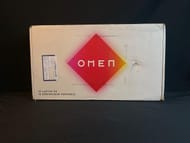
Upon unboxing the HP Omen Transcend 16, its design ethos becomes immediately apparent. The laptop employs a magnesium-aluminum alloy for its chassis, a material choice that yields a lightweight yet sturdy build. This results in a weight of approximately 2.1 kg and a thickness of just 199mm, making it notably portable for a gaming laptop.
This design choice reflects a trend towards more mobile gaming rigs that don't compromise durability.
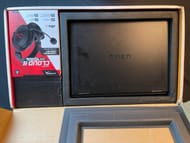
The laptop’s top-hinge design is a functional evolution aimed at reducing display wobble – a common issue in many laptops. This improvement is not just aesthetic; it enhances the stability of the display during intense gaming sessions, where even minor movements can be distracting. The feel of the hinge conveys a sense of solidity and smoothness as it is adjusted.
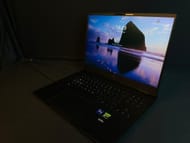
The Omen Transcend 16 boasts a 16-inch WQXGA mini-LED display, a first for the OMEN series. The screen delivers an impressive 240Hz refresh rate, HDR 1000, and a sustained brightness of 1000 nits.
The visual output is sharp, with colors appearing vivid and contrast ratios deep, enhancing the overall sensory experience. The display's quality is particularly noticeable in well-lit environments, even outdoors, where the high brightness level maintains visibility.
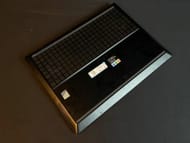
Thermal management, crucial in gaming laptops, is addressed through a redesigned vent system. The square vents not only contribute to the overall aesthetic but are engineered to increase air intake, which should, in theory, improve heat dissipation during heavy usage.
This feature will likely be appreciated in practice, as gaming laptops often struggle with heat management.

Other notable features include an FHD IR camera, offering biometric security for logins – a nod towards enhanced privacy and security. The integrated OMEN cam and voice enhancer software are practical additions for streamers and gamers who frequently engage in online communication, promising clearer audio and video transmission.
In its initial presentation, the Omen Transcend 16 seems to balance aesthetics with functionality. It looks like a device that has evolved in response to the practical needs of gamers, from its sturdy yet portable build to its high-quality display and thoughtfully designed thermal management system.
Display
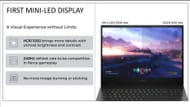
The HP Omen Transcend 16's display is a standout feature that sets a new standard for gaming laptops. The device boasts a 16-inch WQXGA (2560 x 1600) mini-LED panel, a choice that speaks to the emphasis on high-quality visual output.
The mini-LED technology is particularly noteworthy as it offers several advantages over traditional LCD panels, including improved color accuracy, deeper blacks, and higher contrast ratios.
With a 240Hz refresh rate, the display provides an exceptionally smooth visual experience, crucial for fast-paced games where every millisecond counts.
In terms of brightness and color reproduction, the Omen Transcend 16 shines with a sustained brightness of 1000 nits and HDR 1000 capability. This high brightness level ensures that the screen remains visible and vibrant even in well-lit environments, a common challenge for many gaming laptops.
The HDR 1000 support further enhances the viewing experience by providing a wider range of colors and more nuanced shades, allowing for more lifelike and immersive graphics. This is especially beneficial in games like Forza Motorsport, where realistic lighting and detailed environments are pivotal to the gaming experience.
The display's 16:10 aspect ratio also deserves mention. This aspect ratio offers more vertical screen space compared to the traditional 16:9, which can be particularly advantageous in productivity tasks, providing more room for on-screen content.
This is complemented by the screen's DCI-P3 100% color gamut coverage, ensuring that the colors are not only bright but also accurate and consistent.
Keyboard and trackpad
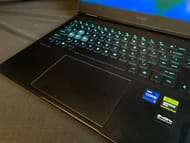
The keyboard on the Omen Transcend 16 is designed with gaming in mind. It features well-spaced keys with good travel, providing a tactile and responsive typing experience. The keys offer a satisfying click without being too loud, ideal for gaming sessions that require quick and precise keystrokes.
Additionally, the keyboard includes customizable RGB backlighting, a staple for gaming laptops, allowing users to personalize their setup or adjust lighting based on their environment.
The trackpad of the Omen Transcend 16 complements the keyboard in terms of functionality and design. It is spacious and smooth, allowing for precise cursor control and gesture support.
The trackpad's responsiveness is well-tuned, providing an accurate and seamless experience whether you’re navigating through web pages or using gesture controls in creative software. It’s also positioned to minimize accidental palm touches during typing, a thoughtful design choice for both gaming and general use.
Performance in Forza Motorsport
This table provides a detailed look at the performance of the OMEN Transcend 16 under various settings in Forza Motorsport.
At 1080p Ultra without RT and DLSS, the laptop averages 83 FPS, with a 0.1% low of 32 FPS and a 1% low of 51 FPS, indicating stable performance with minimal frame drops. At 2560x1440 resolution without RT, the average FPS drops to 64, with lows of 33 FPS and 48 FPS, still maintaining playable performance.
However, with RT enabled at 2560x1440, the average FPS significantly reduces to 24, with both 0.1% and 1% lows at 19 FPS, reflecting the intensive demand of ray-tracing on the system's resources.
